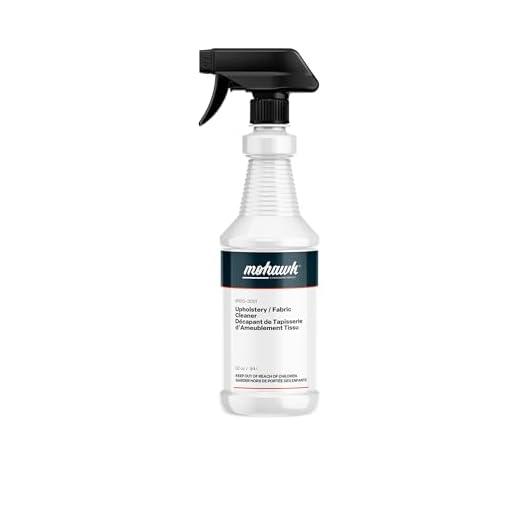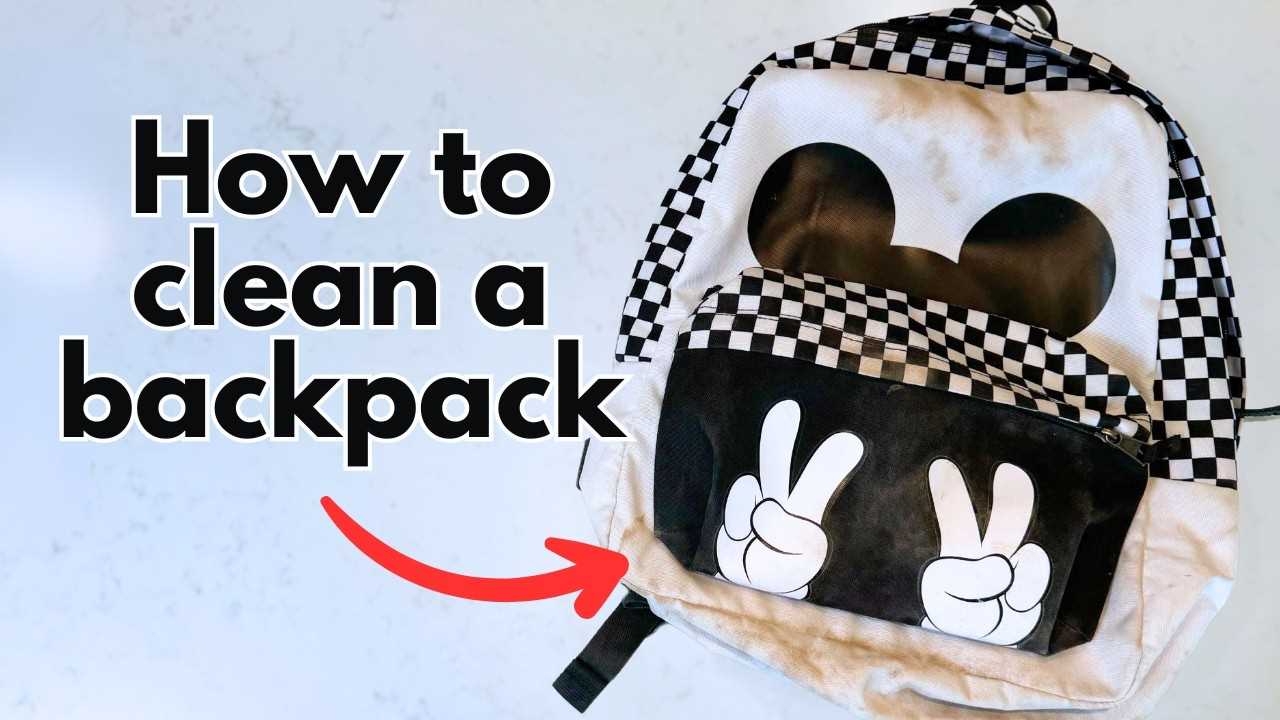




To maintain the longevity of your gear, it’s essential to keep it clean and fresh. This article provides practical steps and tips for effectively cleaning your travel companion, whether it’s a school bag, hiking pack, or everyday tote. By following these guidelines, you can ensure your belongings stay hygienic and visually appealing.
This information will be beneficial for students, travelers, and outdoor enthusiasts who frequently use their bags and want to preserve their condition. The article covers various cleaning methods, including hand washing and machine washing, along with specific instructions for different materials.
In summary, you’ll learn about suitable cleaning agents, drying techniques, and preventive measures to keep your bag looking its best. With these tips, you’ll be able to tackle dirt, stains, and odors, ensuring your bag remains in excellent shape for years to come.
How to Clean Your Backpack
To maintain the appearance and longevity of your carryall, it’s essential to clean it regularly. Begin by emptying the bag of all contents, including pockets and compartments, to ensure a thorough cleaning process.
Next, check the care label for specific cleaning instructions. Most fabric bags can be washed in a washing machine, while leather or specialized materials may require a different approach.
Cleaning Instructions
For machine-washable options, follow these steps:
- Use a soft brush or cloth to remove loose dirt and debris.
- Secure all zippers and fasten any straps to prevent tangling.
- Place the bag inside a laundry bag or pillowcase to protect it during the wash.
- Select a gentle cycle with cold water and a mild detergent.
If hand-washing is necessary, fill a basin with lukewarm water and a small amount of detergent. Gently scrub the exterior and interior with a soft brush or cloth, paying extra attention to stained areas. Rinse thoroughly to remove any soap residue.
After cleaning, air-dry the pack away from direct sunlight or heat sources. Avoid using a dryer, as high temperatures can damage the materials.
For stubborn stains, consider using a stain remover specifically designed for the fabric type. Always test any cleaning product on a small, inconspicuous area first.
Regular maintenance, including spot cleaning and proper storage, will keep your gear looking fresh and extend its lifespan.
Assessing Material Type for Cleaning
Understanding the material composition of a bag is fundamental before attempting any cleaning. Different fabrics and materials respond uniquely to various cleaning methods, which can significantly affect the longevity and appearance of the item.
Common materials include polyester, nylon, canvas, leather, and eco-friendly fabrics. Each type has specific care instructions to avoid damage during cleaning.
Material Overview
Here’s a brief guide on some popular materials:
- Polyester: Durable and resistant to fading. Machine washing is generally safe, but air drying is recommended to prevent shrinking.
- Nylon: Lightweight and water-resistant. Spot cleaning is often sufficient, but it can also withstand gentle machine washing.
- Canvas: Typically more robust. Can be washed in cold water; however, avoid bleach to maintain color integrity.
- Leather: Requires special care. Use a damp cloth for cleaning and apply leather conditioner afterward to maintain suppleness.
- Eco-friendly fabrics: Often made from recycled materials. Check for specific guidelines, as they may vary widely.
Before cleaning, always check the care label for specific instructions related to the material type. This step ensures that the chosen cleaning method aligns with the fabric’s requirements.
Preparing Your Bag for Cleaning
Remove all items from the compartments of your gear before initiating the cleaning process. This includes checking for any small belongings, loose change, or personal items that may be hidden in pockets. Pay close attention to hidden zippers and secret compartments to ensure a thorough emptying.
Inspect the exterior and interior for any damage or wear. Look for frayed straps, broken buckles, or tears in the fabric. Addressing these issues prior to cleaning can prevent further damage during the washing process. If necessary, repair small tears with fabric patches or sewing.
Cleaning Preparations
Detach any removable components, such as straps, pouches, or frames. This will allow for a more thorough cleaning and help protect these parts from potential damage. Additionally, check care instructions that may be provided by the manufacturer regarding washing methods.
- Shake out debris: Gently shake the bag upside down to remove dirt and loose particles.
- Spot clean: Use a damp cloth and mild detergent to address specific stains or spots.
- Secure zippers and fasteners: Make sure all zippers and buckles are closed to prevent snagging during washing.
Before proceeding to wash, consider the type of fabric and any specific care recommendations. Some materials may require special attention to maintain their integrity. For instance, waterproof fabrics may need a different approach compared to standard fabric types.
Choosing the Right Cleaning Products
Selecting appropriate cleaning agents for your gear is critical to ensure its longevity and performance. Focus on products that are specifically designed for fabric materials, as these will effectively lift dirt and stains without causing damage. Avoid harsh chemicals that may degrade the fabric or impact any waterproof coatings.
Look for biodegradable options that are environmentally friendly. These products are usually gentler on materials and better for the planet. Always check the label for compatibility with the materials used in your item to prevent any adverse reactions.
Consider the Following Factors
- Type of Fabric: Understand the material composition of your gear. Some fabrics require specialized cleaners.
- Stain Type: Identify the nature of the stains. Oily stains may need different treatment compared to mud or food residues.
- Water Temperature: Check if the cleaning agent is effective in cold or warm water, as some products perform better at specific temperatures.
Using the wrong cleaning agents can lead to discoloration or a decrease in functionality, especially if your item has waterproof features. Always test a small, inconspicuous area before applying any cleaner widely.
In summary, choosing the right cleaning products involves understanding the fabric type, the nature of stains, and ensuring compatibility with the cleaning method you plan to use.
Effective Hand-Washing Techniques
Begin by preparing a suitable cleaning solution. Mix warm water with a mild detergent in a basin or bathtub, ensuring the detergent is free from harsh chemicals that may damage the fabric. A ratio of approximately one tablespoon of detergent per gallon of water is often adequate.
Before immersing the item, empty all pockets and remove any detachable components, such as straps or pouches. This prevents damage during the cleaning process. Inspect for stains and treat them individually by applying a small amount of the detergent solution directly to the affected area. Gently rub the fabric with a soft cloth or sponge.
Washing Process
Carefully submerge the item in the soapy water, allowing it to soak for 10 to 15 minutes. Avoid agitating too vigorously, as this may distort the shape. Instead, use a soft brush or cloth to gently scrub any soiled areas.
Once cleaning is complete, rinse thoroughly with cool water to remove all detergent. Ensure no residue remains, as this can attract dirt and grime in the future.
Drying Techniques
After rinsing, gently press out excess water without wringing or twisting the fabric. Lay the item flat on a clean towel and roll it up to absorb additional moisture. Finally, hang it in a well-ventilated area away from direct sunlight to prevent fading.
These steps help maintain the integrity and appearance of the item while ensuring it remains hygienic for future use.
Drying Methods to Preserve Shape and Fabric
Allow your gear to air dry in a well-ventilated area, away from direct sunlight and heat sources. This technique helps maintain the integrity of the materials and prevents warping or fading.
For added shape retention, consider using a towel to absorb excess moisture. Roll the bag inside the towel and gently press to extract water before laying it flat to dry.
- Air Drying: Place the item in a shaded spot with good airflow.
- Towel Method: Use a clean towel to soak up extra water.
- Shaped Drying: Stuff the interior with crumpled newspaper or clean towels to help maintain the structure.
Using these methods will ensure that your equipment retains its shape and fabric quality, extending its lifespan and functionality.
Best way to wash backpack
Features
| Part Number | JS0A47JK008 |
| Model | Big Student |
| Warranty | Manufacturer's Warranty - JanSport Outdoor Equipment is warranted to be free from defects in materials and workmanship for the life of the product. The warranty applies when the product is used for the purpose intended, under normal conditions, and does not apply to damages caused by typical wear and tear, unreasonable use, or neglect. |
| Color | Black |
| Is Adult Product | |
| Size | One Size |
Features
| Part Number | VP300ES |
| Model | VP300ES |
| Warranty | 1 year limited warranty. |
| Color | Green |
| Is Adult Product | |
| Release Date | 2021-12-16T00:00:01Z |
| Size | 1 Count (Pack of 1) |
Features
| Part Number | B01H5S3ZK6 |
| Model | B01H5S3ZK6 |
| Color | White |
| Size | 32 Fl Oz (Pack of 1) |
Features
| Part Number | 061 |
| Model | 061 |
| Color | Black |
| Size | 30L |
Features
| Part Number | DISUXH |
| Model | DISUXH |
| Color | Midnight Grey |
| Size | 24" x 13.6" x 13.6" |
Video:
FAQ:
What are the best methods for cleaning a backpack without damaging it?
Cleaning a backpack can vary based on its material, but generally, the safest methods include hand washing and using a washing machine on a gentle cycle. For hand washing, fill a tub or sink with lukewarm water and add a mild detergent. Submerge the backpack, gently scrub with a soft brush or cloth, and pay attention to areas that may have stains or dirt buildup. If using a washing machine, ensure that the backpack is machine washable, remove all items, and place it in a laundry bag for protection. Use a gentle cycle with cold water and a mild detergent. Always air dry the backpack to prevent warping or damage from high heat.
How often should I wash my backpack, and are there signs that indicate it needs cleaning?
The frequency of washing a backpack depends on its use. For daily use, a thorough clean every few months is a good practice. If you notice visible dirt, stains, or unpleasant odors, it’s time to wash it. Additionally, if you’ve used the backpack for outdoor activities or travel, it may require more frequent cleaning. Regularly checking for wear and tear, such as fraying straps or loose seams, can also indicate that it’s time for a cleaning and inspection.
Can I use bleach or harsh chemicals to clean my backpack?
It’s not advisable to use bleach or harsh chemicals on your backpack, as these can damage the fabric and degrade the material. Instead, opt for mild detergents specifically formulated for delicate fabrics. In case of tough stains, consider spot cleaning with a mixture of water and a few drops of mild soap, applying it gently with a cloth. Always test any cleaning solution on a small, inconspicuous area first to ensure it won’t cause discoloration or damage.







